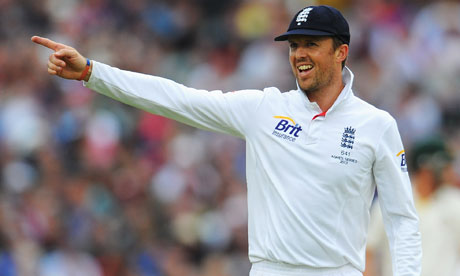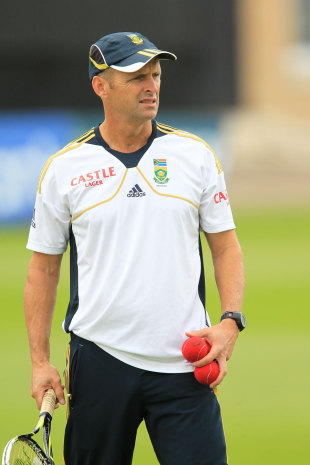John Authers in The Financial Times
Finance is all about trust. JP Morgan, patriarch of the banking dynasty, told Congress in the 1912 hearings that led to the foundation of the US Federal Reserve, that the first thing in credit was “character, before money or anything else. Money cannot buy it.
“A man I do not trust could not get money from me on all the bonds in Christendom,” he added. “I think that is the fundamental basis of business.” He was right. More than a century later, it is ever clearer that, without trust, finance collapses. That is no less true now, when quadrillions change hands in electronic transactions across the globe, than it was when men such as Morgan dominated markets trading face to face.
And that is a problem. Trust has broken down throughout society. From angry lynch mobs on social media to the fracturing of the western world’s political establishment, this is an accepted fact of life, and it is not merely true of politics. Over the past three decades, trust in markets has evaporated.
In 1990, when I started at the Financial Times, trust in financiers and the media who covered them was, if anything, excessive. Readers were deferential towards the FT and, particularly, the stone-tablet certainties of the Lex column, which since the 1930s has dispensed magisterial and anonymous investment advice in finely chiselled 300-word notes.
Trainee bankers in the City of London were required to read Lex before arriving at the office. If we said it, it must be true. Audience engagement came in handwritten letters, often in green ink. Once, a reader pointed out a minor error and ended: “The FT cannot be wrong, can it?” I phoned him and discovered this was not sarcasm. The FT was and is exclusively produced by human beings, but it had not occurred to him that we were capable of making a mistake.
Back then, we made easy profits publishing page after page of almost illegible share price tables. One colleague had started in the 1960s as “Our Actuary” — his job was to calculate, using a slide rule, the value of the FTSE index after the market closed.
Then came democratisation. As the 1990s progressed, the internet gave data away for free. Anyone with money could participate in the financial world without relying on the old intermediaries. If Americans wanted to shift between funds or countries, new online “ fund supermarkets” sprung up to let them move their pension fund money as much as they liked.
Technology also broke the hold of bankers over finance, replacing it with the invisible hand of capital markets. No longer did banks’ lending officers decide on loans for businesses or mortgages; those decisions instead rested in the markets for mortgage-backed securities, corporate paper and junk bonds. Meanwhile, banks were merged, deregulated and freed to re-form themselves.
But the sense of democratisation did not last. The crises that rent the financial world in twain, from the dotcom bubble in 2000 through to the 2008 Lehman debacle and this decade’s eurozone sovereign debt crisis, ensured instead that trust broke down. That collapse appears to me to be total: in financial institutions, in the markets and, most painfully for me, in the financial media. Once our word was accepted unquestioningly (which was unhealthy); now, information is suspect just because it comes from us, which is possibly even more unhealthy.
To explain this, let me tell the story of the most contentious trip to the bank I have ever made.
Two days after Lehman Brothers declared bankruptcy, in September 2008, I went on an anxious walk to my local bank branch. Working in New York, I had recently sold my flat in London and a large sum had just landed in my account at Citibank — far more than the insured limit, which at that point was $100,000.
It did not seem very safe there. Overnight, the Federal Reserve had spent $85bn to bail out the huge insurance company AIG, which had unwisely guaranteed much credit now sitting on banks’ books. Were AIG to go south, taking its guarantees with it, many banks would suddenly find themselves with worthless assets and become insolvent.
Meanwhile, a money market fund had “broken the buck”. Money market funds were treated like bank accounts by their clients. They switch money between very safe short-term bonds, trying to find higher rates than a deposit account can offer. Each share in the fund is worth $1, interest is distributed and the price cannot dip below $1. As the funds did not pay premiums for deposit insurance, they could pay higher interest rates for no perceived extra risk.
Thus there was outright panic when a large money market fund admitted that it held Lehman Brothers bonds, that its price must drop to 97 cents and that it was freezing access to the fund. Across the US, investors rushed to pull their money out of almost anything with any risk attached to it, and poured it into the safest investments they could find — gold and very short-term US government debt (Treasury bills, or T-bills). This was an old-fashioned bank run, but happening where the general public could not see it. Panic was only visible to those who understood the arcana of T-bill yields.
Our headline that day read “Panic grips credit markets” under a banner about the “banking crisis” in red letters.
There was no time to do anything complicated with my own money. Once I reached my lunch hour, I went to our local Citi branch, with a plan to take out half my money and put it into rival bank Chase, whose branch was next door. This would double the amount of money that was insured.
This is how I recounted what happened next, in a column for the FT last month:
“We were in Midtown Manhattan, surrounded by investment banking offices. At Citi, I found a long queue, all well-dressed Wall Streeters. They were doing the same as me. Next door, Chase was also full of anxious-looking bankers. Once I reached the relationship officer, who was great, she told me that she and her opposite number at Chase had agreed a plan of action. I need not open an account at another bank. Using bullet points, she asked if I was married and had children. Then she opened accounts for each of my children in trust and a joint account with my wife. In just a few minutes I had quadrupled my deposit insurance coverage. I was now exposed to Uncle Sam, not Citi. With a smile, she told me she had been doing this all morning. Neither she nor her friend at Chase had ever had requests to do this until that week.”
Ten years on, this is my most vivid memory of the crisis. The implications were clear: Wall Streeters, who understood what was going on, felt they had to shore up their money in insured deposits. The bank run in the trading rooms was becoming visible in the bank branches down below.
In normal circumstances, the tale of the bank branch would have made an ideal anecdote with which to lead our coverage, perhaps with a photo of the queue of anxious bankers. Low T-bill yields sound dry and lack visual appeal; what I had just seen looked like a bank run. (Although technically it was not — nobody I saw was taking out money.)
But these were not normal circumstances, and I never seriously considered writing about it. Banks are fragile constructs. By design, they have more money lent out than they keep to cover deposits. A self-fulfilling loss of confidence can force a bank out of business, even if it is perfectly well run. In a febrile environment, I thought an image of a Manhattan bank run would be alarmist. I wrote a piece invoking a breakdown in trust between banks and described the atmosphere as “panic”, but did not mention the bank branch. Ten years later, with the anniversary upon us, I thought it would be an interesting anecdote to dramatise the crisis.
In the distrustful and embittered world of 2018, the column about what I saw and why I chose not to write about it provoked a backlash that amazed me. Hundreds of responses poured in. Opinion was overwhelmingly against me.
One email told me: “Your decision to save yourself while neglecting your readership is unforgivable and in the very nature of the elitist Cal Hockley of the Titanic scrambling for a lifeboat at the expense of others in need.” One commenter on FT.com wrote: “This reads like Ford trying to explain why pardoning Nixon was the right thing to do.”
“I have re-read the article, and the comments, a couple of times,” wrote another. “And I realised that it actually makes me want to vomit, as I realise what a divide there is between you and I, between the people of the establishment like yourself, and the ordinary schmucks like myself. The current system is literally sickening and was saved for those who have something to protect, at the expense of those who they are exploiting.”
Feedback carried on and on in this vein. How could we in the media ever be trusted if we did not tell the whole truth? Who were we to edit the facts and the truth that were presented? Why were we covering up for our friends in the banks? Newspaper columns attacking me for my hypocrisy popped up across the world, from France to Singapore.
I found the feedback astonishing and wrong-headed. But I am now beginning to grasp the threads of the problem. Most important is the death of belief in the media as an institution that edits and clarifies or chooses priorities. Newspapers had to do this. There was only so much space in the paper each day. Editing was their greatest service to society.
Much the same was true of nightly half-hour news broadcasts in pre-cable television. But now, the notion of self-censorship is alien and suspect. People expect “the whole truth”. The idea of news organisations with long-standing cultures and staffed by trained professionals deciding what is best to publish appears bankrupt. We are not trusted to do this, and not just because of politicians crying “fake news”.
Rather, the rise of social media has redefined all other media. If the incident in the Citi branch were to happen today, someone would put a photo of it on Facebook and Twitter. It might or might not go viral. But it would be out there, without context or explanation. The journalistic duty I felt to be responsible and not foment panic is now at an end. This is dangerous.
Another issue is distrust of bankers. Nobody ever much liked “fat cats”, but this pickled into hatred as bankers avoided personal criminal punishment for their roles in the crisis. Bank bailouts were, I still think, necessary to protect depositors. But they are now largely perceived merely as protecting bankers. My self-censorship seemed to be an effort to help my friends the bankers, not to shield depositors from a panic.
Then there is inequality. In my column, I said that I “happened to have a lot of money in my account” but made no mention of selling my London flat. People assumed that if I had several hundred thousand dollars sitting in a bank account, I must be very rich. That, in many eyes, made my actions immoral. Once I entered the FT website comments thread to explain where the money had come from, some thought this changed everything. It was “important information”. “In the article where moral questions [were] raised, the nature of the capital should have been explained better,” one commenter said.
The hidden premise was that if I were rich, I would not have been morally entitled to protect my money ahead of others lacking the information I was privy to. Bear in mind that to read this piece, it was necessary to subscribe to the FT.
Put these factors together, and you have a catastrophic breakdown in trust. How did we get here?
The democratisation of finance in the 1990s was healthy. Transparency revealed excessive fees that slowly began to fall. For us at the FT, in many ways an entrenched monopoly, this meant lost advertising and new competition from cable TV, data providers and an array of online services.
But that democratisation was tragically mishandled and regulators let go of the reins far too easily. In 1999, as the Nasdaq index shot to the sky, the share prices of new online financial media groups such as thestreet.com shot up with them. On US television, ads for online brokers showed fictional truck drivers apparently buying their own island with the proceeds of their earnings from trading on the internet. By 2000, when I spent time at business school, MBA students day-traded on their laptops in class, oblivious to what their professors were saying.
Once that bubble burst, the pitfalls of rushed democratisation were painfully revealed. Small savers had been sucked into the bubble at the top, and sustained bad losses.
Trust then died with the credit crisis of 2008 and its aftermath. The sheer injustice of the ensuing government cuts and mass layoffs, which deepened inequality and left many behind while leaving perpetrators unpunished, ensured this.
The public also lost their trust in journalists as their guides in dealing with this. We were held to have failed to warn the public of the impending crisis in 2008. I think this is unfair; the FT and many other outlets were loudly sceptical and had been giving the problems of US subprime lenders blanket coverage for two years before Lehman Brothers went down. In the earlier dotcom bubble, however, I think the media has more of a case to answer — that boom was lucrative for us and many were too credulous, helping the bubble to inflate.
Further, new media robbed journalists of our mystique. In 1990, readers had no idea what we looked like. Much of the FT, including all its stock market coverage, was written anonymously. The only venue for our work was on paper and the only way to respond (apart from the very motivated, who used the telephone) was also on paper. The rule of thumb was that for every letter we received, at least another hundred readers felt the same way.
Now, almost everything in the paper that expresses an opinion carries a photo. Once my photo appeared above my name on the old Short View column, my feedback multiplied maybe fivefold. The buzzword was to be “multimodal”, regaling readers with the same ideas in multiple formats. In 2007 we started producing video.
My readers became my viewers, watching me speak to them on screen every day, and my feedback jumped again. Answering emails from readers took over my mornings. Often these would start “Dear John”, or even just “John”, as though from people who knew me. So much for our old mystique.
By 2010, social media was a fact of life. Writing on Twitter, journalists’ social network of choice, became part of the job. People expected us to interact with them. This sounds good. We were transparent and interactive in a way we had not been before. But it became part of my job to get into arguments with strangers, who stayed anonymous, in a 140-character medium that made the expression of any nuance impossible.
Meanwhile, the FT hosted social media of its own. Audience engagement became a buzzword. If readers commented, we talked back. Starting in 2012, I started debating with readers and I learnt a lot. FT readers are often specialists, and they helped me understand some arcane subject matter. Once, an intense discussion with well over a hundred entries on the subject of cyclically adjusted price/earnings multiples (don’t ask) yielded all the research I needed to write a long feature.
Now, following Twitter, comments below the line are degenerating into a cesspit of anger and disinformation. Where once I debated with specialists, now I referee nasty political arguments or take the abuse myself. The status of the FT and its competitors in the financial media as institutions entrusted with the task of giving people a sound version of the truth now appears, to many, to be totally out of date.
Even more dangerously for the future, the markets and their implicit judgments have been brought into the realm of politics (and not just by President Trump). This was not true even 20 years ago; when Al Gore faced off against George W Bush in 2000, only months after the dotcom bubble burst, neither candidate made much of an issue of it.
But now, following Lehman, people understand that decisions made in capital markets matter. That makes markets part of the political battlefield; not just how to interpret them, but even the actual market numbers are now open to question.
Brexit rammed this home to me. During the 2016 referendum campaign, Remainers argued that voting to leave would mean a disastrous hit for sterling. This was not exactly Project Fear; whether or not you thought Brexit was a good idea, it was obvious that it would initially weaken the pound. A weaker currency can be good news — the pound’s humiliating exit from the EU’s exchange rate mechanism in 1992, for example, set the scene for an economic boom throughout the late 1990s.
But reporting on the pound on the night of the referendum was a new and different experience. Sitting in New York as the results came in through the British night, I had to write comments and make videos, while trying to master my emotions about the huge decision that my home country had just taken. Sterling fell more than 10 per cent against the dollar in a matter of minutes — more than double its previous greatest fall in the many decades that it had been allowed to float, bringing it to its lowest level in more than three decades. Remarkably, that reaction by foreign exchange traders has stood up; after two more years of political drama, the pound has wavered but more than two years later remains slightly below the level at which it settled on referendum night.
As I left, at 1am in New York, with London waking up for the new day, I tweeted a chart of daily moves in sterling since 1970, showing that the night’s fall dwarfed anything previously seen. It went viral, which was not surprising. But the nature of the response was amazing. It was a factual chart with a neutral accompanying message. It was treated as a dubious claim.
“LOL got that wrong didn’t you . . . oops!” (There was nothing wrong with it.) “Pretty sure it was like that last month. Scaremongering again.” (No, it was a statement of fact and nothing like this had happened ever, let alone the previous month.)
“Scaremongering. Project Fear talking us down. This is nothing to do with Brexit, it’s to do with the PM cowardice resignation.” (I had made the tweet a matter of hours before David Cameron resigned.)
The reaction showed a willingness to doubt empirical facts. Many also felt that the markets themselves were being political and not just trying to put money where it would make the greatest return. “Bankers punish Britons for their audacity in believing they should have political control of their own country.” (Forex traders in the US and Asia were probably not thinking about this.)
“It will recover, this is what uncertainty does. Also the rich bitter people upset about Brexit.” (Rich and bitter people were unlikely to make trades that they thought would make them poorer, and most of that night’s trading was by foreigners more dispassionate than Britons could be at that point.)
So it continued for days. Thanks to the sell-off in sterling, the UK stock market did not perform that badly (unless you compared it with others, which showed that its performance was lousy). Whether the market really disliked the Brexit vote became a topic of hot debate, which it has remained — even as the market verdict, that Brexit is very bad news if not a disaster, becomes ever clearer.
After Brexit, of course, came Trump. The US president takes the stock market as a gauge of his performance, and any upward move as a political endorsement — while his followers treat any fall, or any prediction of a fall by pundits such as me, as a political attack. The decade in which central banks have bought assets in an open attempt to move markets plays into the narrative that markets are political creations.
This is the toxic loss of trust that now vitiates finance. Once lost, trust is very hard to retrieve, which is alarming. It is also not clear what the financial media can do about it, beyond redoubling our efforts to do a good job.
All the most obvious policy responses come with dangers. Regulating social media from its current sick and ugly state would have advantages but would also be the thin end of a very long wedge. Greater transparency and political oversight for central banks might rebuild confidence but at the risk of politicising institutions we desperately need to maintain independence from politicians. And an overhaul of the prosecutorial system for white-collar crime, to avert the scandalous way so many miscreants escaped a reckoning a decade ago, might work wonders for bolstering public trust — but not if it led to scapegoating or show trials.
On one thing, I remain gloomily clear. Without trust in financial institutions themselves, or those who work in them, or the media who cover them, the next crisis could be far more deadly than the last. Just ask JP Morgan.





